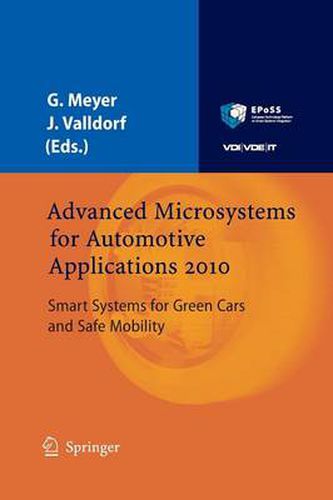Readings Newsletter
Become a Readings Member to make your shopping experience even easier.
Sign in or sign up for free!
You’re not far away from qualifying for FREE standard shipping within Australia
You’ve qualified for FREE standard shipping within Australia
The cart is loading…






This title is printed to order. This book may have been self-published. If so, we cannot guarantee the quality of the content. In the main most books will have gone through the editing process however some may not. We therefore suggest that you be aware of this before ordering this book. If in doubt check either the author or publisher’s details as we are unable to accept any returns unless they are faulty. Please contact us if you have any questions.
The automobile of the future has to meet two primary requirements: the super-efficient use of energy and power and the ultra-safe transportation of people and goods. Both features are increasingly enabled by smart, adaptive and context aware information and communication technologies (ICT), elect- cal or electronic components and systems rather than solely by the mecha- cal means of classic automotive engineering. The most advanced example of this trend is the electrified vehicle combining a full electric powertrain with completely electronic controls like smart power and energy managers, ste- by-wire technologies and intelligent networking capabilities allowing all p- viders and consumers of energy to work in efficient synergy. In the course of this year the first series production electric vehicles will finally come into the market. Automakers - unsure if electric vehicles would really sell - have long time been hesitant to make the necessary changes of their product portfolios. In the coincidence of economic crisis and growing concerns about global warming and energy security companies and public authorities jointly succeeded to overcome many obstacles on the path towards electrifi- tion.
$9.00 standard shipping within Australia
FREE standard shipping within Australia for orders over $100.00
Express & International shipping calculated at checkout
This title is printed to order. This book may have been self-published. If so, we cannot guarantee the quality of the content. In the main most books will have gone through the editing process however some may not. We therefore suggest that you be aware of this before ordering this book. If in doubt check either the author or publisher’s details as we are unable to accept any returns unless they are faulty. Please contact us if you have any questions.
The automobile of the future has to meet two primary requirements: the super-efficient use of energy and power and the ultra-safe transportation of people and goods. Both features are increasingly enabled by smart, adaptive and context aware information and communication technologies (ICT), elect- cal or electronic components and systems rather than solely by the mecha- cal means of classic automotive engineering. The most advanced example of this trend is the electrified vehicle combining a full electric powertrain with completely electronic controls like smart power and energy managers, ste- by-wire technologies and intelligent networking capabilities allowing all p- viders and consumers of energy to work in efficient synergy. In the course of this year the first series production electric vehicles will finally come into the market. Automakers - unsure if electric vehicles would really sell - have long time been hesitant to make the necessary changes of their product portfolios. In the coincidence of economic crisis and growing concerns about global warming and energy security companies and public authorities jointly succeeded to overcome many obstacles on the path towards electrifi- tion.